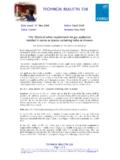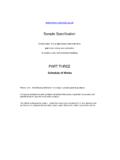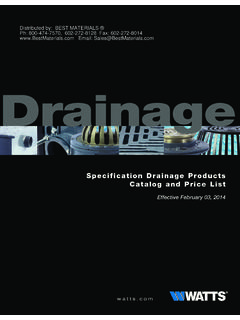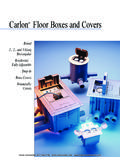Transcription of Guide to the Condensing Boiler Installation …
1 1 GGuuiiddee ttoo tthhee CCoonnddeennssiinngg BBooiilleerr IInnssttaallllaattiioonn AAsssseessssmmeenntt PPrroocceedduurree ffoorr DDwweelllliinnggss CONTENTS 1 INTRODUCTION 2 POSSIBLE Installation DIFFICULTIES 3 OUTLINE OF THE ASSESSMENT PROCEDURE 4 PURPOSE OF THE ASSESSMENT PROCEDURE 5 HOW TO CARRY OUT THE ASSESSMENT 6 FLUE TERMINAL SITING 7 EXTENDED FLUE LENGTHS 8 Boiler LOCATION 9 CONNECTION OF CONDENSATE DRAIN APPENDIX A: ASSESSMENT FORM APPENDIX B: TYPICAL FLUE TYPES APPENDIX C: CONDENSATE DRAIN CONNECTIONS Condensate drain points Condensate drain pipe Installation Condensate drain termination APPENDIX D.
2 ASSESSMENT EXAMPLES D1 Victorian mid terrace house with kitchen in rear extension (no passage) D2 1960s semi-detached house with rear patio adjacent to lounge diner2 1 Introduction 2 Possible Installation difficulties The Domestic Technical Handbook gives guidance on achieving the standards set in the Building (Scotland) Regulations and gives guidance for the efficiency of hot water central heating gas and oil boilers installed in new and existing dwellings.
3 From 1st May 2007 Condensing boilers with a SEDBUK[1] efficiency in band A or B, may be considered to meet the guidance given in the Technical Handbook unless in the case of existing dwellings there are exceptional circumstances that make this impractical or too costly. It is sometimes more difficult to install a Condensing rather than a non- Condensing Boiler because: The flue gases discharged from the flue terminal are cooler and less buoyant, and usually form a visible plume.
4 They may cause wetting of surfaces too close to the terminal, or nuisance to neighbouring property, or people passing nearby. An existing flue designed for a non- Condensing Boiler is unsuitable for a Condensing Boiler (and vice versa), and the flue for a Condensing Boiler should not be shared with any non- Condensing appliance. Appendix A of this Guide is the Condensing Boiler Installation Assessment Procedure, which is to be used in cases where it is expected to be impractical or too costly to install a Condensing Boiler .
5 A liquid condensate forms within the Boiler , and should be discharged to a suitable drain or soakaway. There are a number of ways to overcome these difficulties, and the assessment procedure estimates the extra costs and compares them with typical fuel savings over the lifetime of the Boiler . [1] Seasonal Efficiencies of Domestic Boilers in the UK 3 3 Outline of the assessment procedure 4 Purpose of the assessment procedure Where Installation of a Condensing Boiler is expected to be difficult, an assessment should be carried out to see if a non- Condensing Boiler may be considered to meet the guidance given in the SBSA Technical Handbook Domestic.
6 In this case a correctly completed form (set out in Appendix A of this Guide ) is used to show whether or not exceptional circumstances apply. It is not necessary to complete the form if a Condensing Boiler with efficiency in SEDBUK band A or B is to be fitted. The assessment gives a YES/NO answer to whether it is reasonable to fit a non- Condensing Boiler in a particular building for a specified fuel (gas, LPG, or oil). If the answer is NO , then a Condensing Boiler should be fitted unless some other way can be found to demonstrate that a non- Condensing Boiler may be considered to meet the guidance given in the SBSA Technical Handbook Domestic.
7 If the answer is YES then either a Condensing or non- Condensing Boiler may be fitted. Whatever the answer, the Boiler does not have to be fitted in the position shown on the assessment form, which will have been chosen for least cost without regard for householder preference. Completed assessment forms should be retained by the householder, since they may be helpful when the house is sold. The rest of this Guide provides additional information on how to undertake an assessment and complete the form.
8 It provides important information on what should, or should not, be taken into consideration, especially concerning arrangements for extended flues and condensate drains. 4 5 How to carry out the assessment In nearly all cases it will be possible to install a Condensing Boiler , though with varying levels of difficulty and cost. All feasible options should be considered for whichever fuel has been chosen by the householder, in all the locations that would meet regulations and have not been listed as excluded in Table 1.
9 The simplest way to carry out the assessment is to imagine the building is empty, without furniture and fittings, and the householder is not present. But the householder has to tell you what fuel is to be used (natural gas, LPG, or oil). Your task is to find the lowest cost option (given by the lowest number of points) for installing a Condensing Boiler , taking into account the position of the existing Boiler if there is one. The flue terminal position should meet the guidance requirements given in Section 3 of the SBSA Technical Handbook Domestic.
10 Some Boiler positions and flue terminal positions are excluded from the assessment, as shown in Table 1 (Page 6). These options are NOT to be considered for the assessment procedure. However, this does not necessarily mean they contravene standards or regulations, and in some cases they may be acceptable to the householder. If an existing Boiler is being replaced see Checklist 1 (Page 7). If there is no existing Boiler see Checklist 2 (Page 7).











